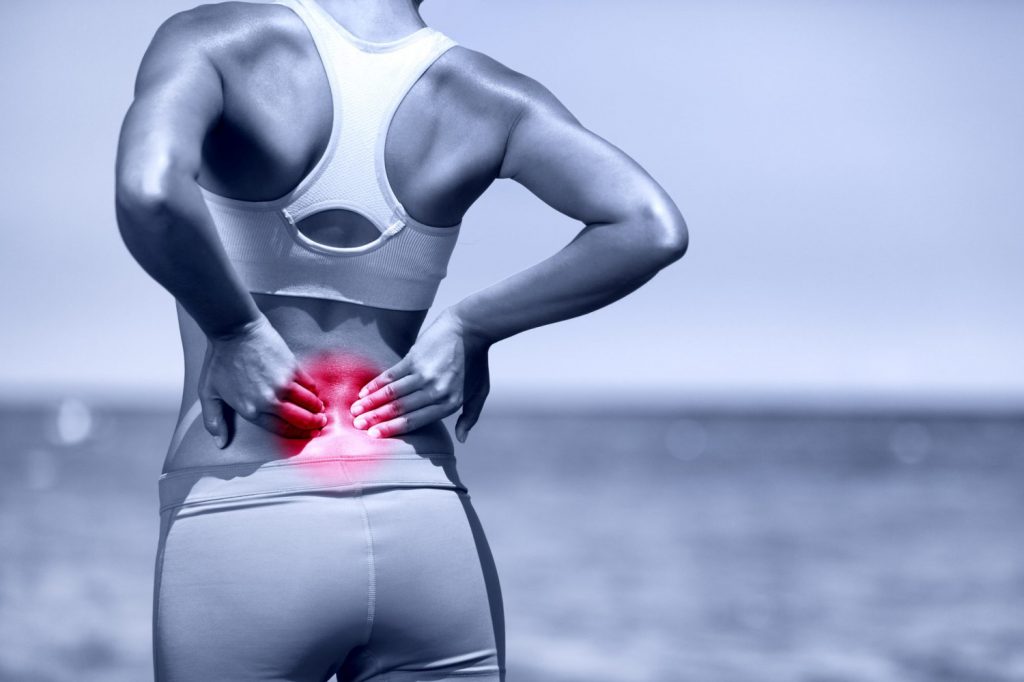
What Back Pain is and what it isn’t…
Back Pain affects most people at some point in their life. Statistics show episodes of pain can occur at similar rates regardless of age, its not a result of ‘getting old’. Granted the younger you are the quicker you tend to recover, but that’s a different issue!
Despite sometimes being incredibly painful when trying to move. The vast majority of Back Pain cases are symptoms of soft tissue (muscle, ligament) injury and not serious medical conditions. It’s fully recoverable with advice, exercise and/or treatment. A X-ray or scan could be ordered if a ‘Red Flag’ condition (see below) is suspected. Red Flag conditions include: cancer, infection, broken bones, permanent nerve damage. These are very rare accounting for only about 1% of all back pain complaints.
You can have bad back pain, especially persistent or chronic back pain, without ANY structural damage. Pain you might be feeling is 100% real and (potentially) debilitating. However, being aware of what ‘triggers’ your back pain can go a long way to ‘de-sensitise‘ the pain.
Think of the noise from a smoke alarm – it’s the same whether the toast is overdone or the house is on fire! The principle is the same for any pain when it has become sensitised by other factors. You can have short bouts of incredible pain but no actual damage of the spine. Sensitising factors include previous injury, stress/depression, tiredness, guarding (avoiding moving/using the spine), poor diet/overweight, overall fitness and lifestyle.
Anatomy
Under normal circumstances your back is a relatively very strong structure. It provides the stability needed to protect the spinal cord. And a firm base of support for arms and legs to facilitate heavy lifting and propulsion. Whilst being lightweight and flexible enough for nimbleness and mobility. There is no manmade structure yet which can match these properties.
Your back has 24 vertebrae in-between the skull and pelvis. Each of these vertebrae slightly pivot over one another using four interlocking facet joints. These allow stable movement of our back in all directions. Positioned between the ‘body’ of each vertebrae are thick intervertebral discs that act as ‘movement dampers’ for the facet joints.
There are thick ligaments which run in-between the vertebrae and along the length of the spine. They help to limit excessive movement and support the intervertebral discs, spinal cord and nerve roots. Nerves branch out from both sides of the spinal column below each vertebrae.
There are at least four layers of muscle which connect and control movement of the vertebrae. The deepest layers are very short muscles which span each facet joints. In addition progressively longer layers of muscle either side of spine enable better control and movement of your back.

Red Flag Symptoms?
The first thing to check is if your pain has a ‘Red Flag’ cause. If so, you need ring NHS direct on 111 and/or see a doctor NOW if you have back pain with any of the following:-
- numbness or tingling around your genitals or buttocks
- difficulty peeing
- loss of bladder or bowel control
- loss of feeling in one or both legs
- chest pain
- a high temperature of 38C or above
- unexplained weight loss
- a swelling or a deformity in your back
- cannot find any position to ease the pain or it’s worse at night
- it started after a serious accident, such as a car accident or bad fall
If you dont have any of the above (good), then have you had a minor fall or knock? – this could be a muscle contusion/strain or ligament sprain. P.O.L.I.C.E. is the best protocol to follow: Protect, Optimal Loading, Ice, Compression, Elevation. It is hard to ‘elevate’ your back but find a comfortable position (see below).
We produced the video below to show what you could do if you have an acute back spasm (without any of the ‘red flags’) to try and
Note: for muscle ‘pulls’ heat often works better than cold. Once initial pain has eased ‘Optimal Loading’ is started. Start slowly moving and stretching the muscles of your back to continue the healing process. Unsure how? Book an appointment to treat back pain with Mark here
Other Causes…
Once red flags have been ruled out we ask the following questions: Does your pain centre on a particular area of your back? Does it radiate or refer anywhere else on your body? What activities aggravate it? What eases it? Have you had this or a similar injury before? This helps to identify the possible cause(s) of your pain:
Persistent or Chronic Back Pain
Back pain or back ache that comes on gradually can be classed as an overuse injury. It’s common to have a mild ache for day or two that then suddenly becomes a sharp pain or ‘flare-up’ after an innocuous ‘twist-bend’ of your back. Special nerves called proprioceptors surround your joints and muscles. Every movement creates impulses from these nerves so your brain automatically knows how you’re moving. Your brain may interpret some impulses (movement) from your spine as dangerous, therefore setting off a ‘fire-alarm’.
Your brain can react to these impulses by producing pain and tightening up the muscles around your back. It’s a self-protection mechanism to try and limit movement. There may or may not be anything structurally wrong with your back. The pain can become ‘persistent’ however because the brain learns to repeatedly interpret these impulses as dangerous. This can be long after any structural issue or damage has healed. This blog post by an excellent Canadian physiotherapist (I’ve been on some of his courses) has another great explanation.
‘Disc’ Pain
A slipped disc or more accurately herniated, protrusion, extrusion and disc bulges are doctors description of disc abnormalities. It’s important to stress that studies have shown that the disc size and shape does not correlate with pain. It’s also worth noting that people who don’t have back pain have disc degeneration (37% of 20-year-olds increasing to 96% of 80-year-olds). And scans “cannot be used to diagnose the source of pain or other disease.”
However, the outer surface of discs do have a nerve supply so any disc change could produce pain. It’s also possible that the disc material can impinge on the spinal cord or nerve roots causing pain. Vertebral discs are made from a specific type of connective tissue. Its soft tissue which is actually very resilient and can heal relatively quickly.
If you have suffered any disc issue there is a good chance it will heal well on its own. If a disc has been overloaded we will deduce why. We would want to off-load it with treatment and prescribe an exercise program to help with healing and recovery.
‘Nerve’ Pain
It’s been shown that compression or irritation on a nerve branch of the spinal column can cause symptoms. This might be either locally, by a radiculopathy (loss of power or sensation) or radicular (shooting) pain down a limb. Impingement or entrapment of the nerve can cause referred pain (aching, burning or gnawing down the legs or arms). Sciatica is classed as a radicular or referred pain. Myofascial trigger points can also cause referred pain and respond extremely well to manual therapy and/or massage treatment. And if chronic pain both often occur at the same time.
It’s possible that serious disc problems or nerve impingements still can occur after a trauma, age related changes or overuse. With minor or mechanical nerve issues, again we would look to off-load it with treatment and an exercise program to help with healing and recovery.
Bone Injuries
A spondylolysis (degeneration or stress defect) of the vertebrae do occur – especially with age or activities that require repeated extension and rotation to one side (i.e. tennis, bowling/pitching etc.). It would need an x-ray or scan to confirm and treatment depends on individual circumstances, but normally includes flexibility and strengthening exercises.
A ‘Spondylolisthesis’ – is a slipping of one vertebra over another, normally L5 over S1 and is graded according to degree of ‘slippage’. There is normally a family history of the issue. In sport it normally shows around puberty. Conservative treatment (non-surgical) is effective for both, but we would be guided with doctors advice in individual cases.
A ‘Spondylitis’ is a group of relatively rare, inflammatory autoimmune diseases of the spine. A Rheumatologist would help manage this chronic condition and Physiotherapy can help to manage the condition.
Treatment
With persistent or chronic pain there is normally a vicious cycle of: Pain = Stiffness = More Pain = More Stiffness. Treatments such manual therapy, exercise, pain killers, injections and surgery attempt to break that cycle. Each therapy has a place, each has advantages, disadvantages and side-effects. Marlow Sports Therapy offer manual therapy and exercise prescription as an effective treatment for persistent back pain. Compared to other therapies the biggest advantage we offer is less risk and negative side-effects. The main disadvantage cited about manual therapy is the relative expense as its very labour intensive.
Manual therapy is an effective assessment and treatment for pain caused by muscle and soft tissue. Progressive exercises maybe prescribed to help strengthen muscles and desensitise the nervous system. Using Sports or Deep Tissue massage, Muscle Energy Techniques, Positional Release Techniques, Joint Mobilisations (not manipulations), and Myofascial Release, we treat the symptoms and also the cause of muscular pain, often with immediate results. K-laser therapy uses advanced state of the art technology to speed up recovery after injury…
We take time to listen to your concerns and try to find a the cause of the pain. You can check online for availability and to book a session at our clinic on Marlow High Street here.
The information above is not intended to diagnose or treat individual problems. Marlow Sports Therapy would always recommend a formal examination by a suitably qualified medical practitioner before undertaking any new exercise or treatment regime.

 Enter your name and email and request our free ebook: 7 Habits of Highly Effective Runners
Enter your name and email and request our free ebook: 7 Habits of Highly Effective Runners